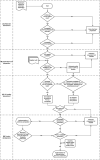Pharmacy Compounded Medicines for Patients With Rare Diseases: Lessons Learned From Chenodeoxycholic Acid and Cholic Acid
- PMID: 34650439
- PMCID: PMC8505773
- DOI: 10.3389/fphar.2021.758210
Pharmacy Compounded Medicines for Patients With Rare Diseases: Lessons Learned From Chenodeoxycholic Acid and Cholic Acid
Abstract
Patients with rare diseases are often confronted with the fact that effective medicines are unavailable or simply not being developed. This situation jeopardizes the health of a large population of vulnerable patients with rare diseases. Pharmacy compounded formulations can provide a safe alternative when authorized treatments are unavailable or unsuitable. Practical guidelines on how to develop and implement pharmacy compounded formulations for patients with rare diseases are limited. The aim of this article is to provide guidance for when and how to apply pharmacy compounded formulations for patients with rare diseases. This is illustrated with two challenging examples: the development and implementation of pharmacy compounding of 1) chenodeoxycholic acid (CDCA) capsules for patients with cerebrotendinous xanthomatosis (CTX) and 2) cholic acid (CA) capsules for patients with rare bile acid synthesis defects (BASD). All critical steps of the development of CDCA and CA capsules are explained and summarized in a practical guideline.
Keywords: bile acid synthesis defects; cerebrotendinous xanthomathosis; chenodeoxycholic acid; cholic acid; orphan medicines; pharmacy compounding; rare diseases.
Copyright © 2021 Polak, Jacobs and Kemper.
Conflict of interest statement
The authors declare that the research was conducted in the absence of any commercial or financial relationships that could be construed as a potential conflict of interest.
Figures
Similar articles
-
Product Validation and Stability Testing of Pharmacy Compounded Cholic Acid Capsules for Dutch Patients with Rare Bile Acid Synthesis Defects.Pharmaceutics. 2023 Feb 26;15(3):773. doi: 10.3390/pharmaceutics15030773. Pharmaceutics. 2023. PMID: 36986634 Free PMC article.
-
Product development and quality of pharmacy compounded chenodeoxycholic acid capsules for Dutch cerebrotendinous xanthomatosis patients.Front Pharmacol. 2023 Oct 17;14:1264997. doi: 10.3389/fphar.2023.1264997. eCollection 2023. Front Pharmacol. 2023. PMID: 37915417 Free PMC article.
-
Challenges in the identification and quantification of an unknown impurity in chenodeoxycholic acid drug substance.Eur J Pharm Sci. 2025 Feb 1;205:106979. doi: 10.1016/j.ejps.2024.106979. Epub 2024 Dec 4. Eur J Pharm Sci. 2025. PMID: 39643128
-
Chenodeoxycholic Acid: An Update on Its Therapeutic Applications.Handb Exp Pharmacol. 2019;256:265-282. doi: 10.1007/164_2019_226. Handb Exp Pharmacol. 2019. PMID: 31267167 Review.
-
Cerebrotendinous xanthomatosis (CTX): a treatable lipid storage disease.Pediatr Endocrinol Rev. 2009 Sep;7(1):6-11. Pediatr Endocrinol Rev. 2009. PMID: 19696711 Review.
Cited by
-
Combatting the rising costs of cancer drugs; interventions from a university hospital's perspective.Front Pharmacol. 2023 Aug 28;14:1264951. doi: 10.3389/fphar.2023.1264951. eCollection 2023. Front Pharmacol. 2023. PMID: 37701038 Free PMC article.
-
Cerebrotendinous Xanthomatosis: A practice review of pathophysiology, diagnosis, and treatment.Front Neurol. 2022 Dec 23;13:1049850. doi: 10.3389/fneur.2022.1049850. eCollection 2022. Front Neurol. 2022. PMID: 36619921 Free PMC article. Review.
-
Efficacy and safety of switching therapy from chenodeoxycholic acid to cholic acid in Japanese patients with bile acid synthesis disorders.Mol Genet Metab Rep. 2024 Nov 22;41:101166. doi: 10.1016/j.ymgmr.2024.101166. eCollection 2024 Dec. Mol Genet Metab Rep. 2024. PMID: 39650085 Free PMC article.
-
Product Validation and Stability Testing of Pharmacy Compounded Cholic Acid Capsules for Dutch Patients with Rare Bile Acid Synthesis Defects.Pharmaceutics. 2023 Feb 26;15(3):773. doi: 10.3390/pharmaceutics15030773. Pharmaceutics. 2023. PMID: 36986634 Free PMC article.
-
Cost-Effective and Sustainable Drug Use in Hospitals: A Systematic and Practice-Based Approach.Appl Health Econ Health Policy. 2025 Mar;23(2):183-195. doi: 10.1007/s40258-024-00937-6. Epub 2024 Dec 19. Appl Health Econ Health Policy. 2025. PMID: 39702592 Free PMC article.
References
-
- Bouwman-Boer Y., Fenton-May V., Le Brun P. (2015b). “Practical Pharmaceutics,” in : Control Strategy Critical Quality Attributes, Process Parameters and Sources of Variability (Switzerland: Springer International Publishing; ). Chapter 17.7. 10.1007/978-3-319-15814-3 - DOI
-
- Bouwman-Boer Y., Fenton-May V., Le Brun P. (2015a). Practical Pharmaceutics. An International Guideline for the Preparation, Care and Use of Medicinal Products. Switzerland: Springer International Publishing.
-
- Bouwman-Boer Y., Fenton-May V., Le Brun P. (2015c). Practical Pharmaceutics. Chapter 17.8: Product Validation. Switzerland: Springer International Publishing.
LinkOut - more resources
Full Text Sources


